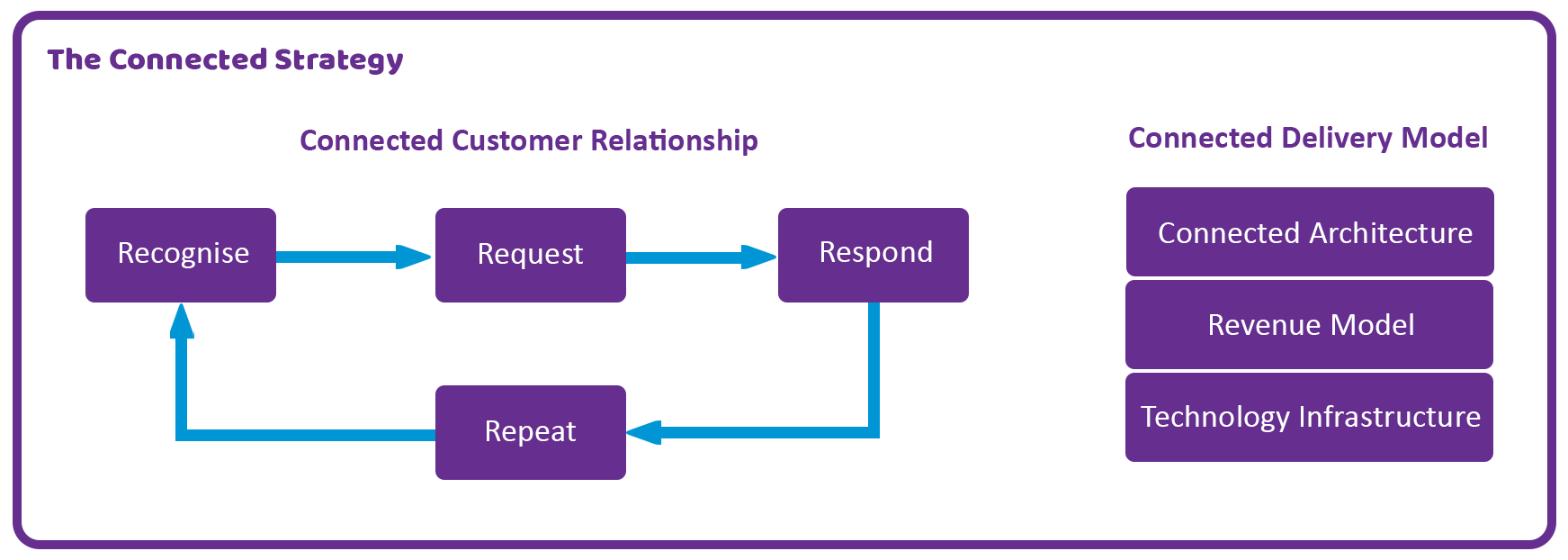In this second series of blogs, we take a look at 4 effective strategies companies can adopt to build much deeper relationships with customers.
The Connected Customer
Part 2 | Connected Customers
Four effective strategies for building deeper customer relationships
The first blog in this series, titled “Don’t think digital disruption, think digital enablement of customers” was a call to think beyond the current COVID-19 crisis and adopt a long-term digital strategy with a focus on customers.
In this second blog in the series, we take a look at 4 effective strategies companies can adopt to build much deeper relationships with customers. These four strategies are taken from the 2019 book "Connected Strategy” by Siggelkow and Terwisch.
The four strategies
In the book, the authors explore four strategies they have identified, namely:
- respond to desire,
- curated offering,
- coach behaviour, and
- automatic execution;
The authors argue that by adopting the correct connected strategy, organisations can break the trade-off between customer happiness and operational efficiency – in effect they can have both.
We only review the four strategies briefly – you can read a detailed summary of the concepts in this Harvard Business Review article and also listen to the authors in this webinar.
The benefits
These are practical strategies that if adopted correctly by mid-market businesses, will ensure that they:
- improve the lives of their customers.
- lower cost and boost operational efficiencies.
This blog provides some high-level guidance on picking the right strategy for your business.
Credit: All graphics used are derivations or copies of those in the book.
Designing your strategy
Two elements of connected strategy
To develop a connected strategy, you must design two elements:
- A connected customer relationship and
- A connected delivery model
Diagram from "Connected Strategy” by Siggelkow and Terwisch.
The connected customer relationship
Four steps for a connected customer relationship
The connected customer relationship model is the relationship between the organisation and its customer (as depicted above). There are four generic steps
- The first step is recognition of a customer need (which will lead them to consider your products and services).
- The second step is a request from the customer for a particular product or service.
- The third step is a response from the organisation to that request. This should be in as streamlined and user-friendly a manner as possible.
- And finally, comes repetition, an ongoing relationship with the customer which enables the whole cycle to start again and be improved over time.
As we will see, this customer relationship can be enhanced in four ways depending on the needs of your customers, and the products and services you deliver. However, before you do that you need to understand your connected delivery model.
The connected delivery model
Three decisions for connected delivery
The connected delivery model requires the organisation to make three key decisions:
- Connection architecture. This decision requires deciding which connections need to be made between the organisation, suppliers and customers.
- Revenue model. The second decision to be made is around the money flow through the architecture, how you will monetise the value released to the customer.
- Technology infrastructure. Lastly, the organisation needs to decide which technology to use to deliver the connected strategy.
Once you have designed these three elements, you are ready to develop your connected strategy.
What are the connected strategies?
- Respond to desire.
- Curated offering.
- Coach Behaviour.
- Automatic execution.
In the next blog, we will look at the first of these, the respond to desire strategy.
Let us know your thoughts
I hope this blog helps to get you thinking about your business and how to better serve your customers. I'd love to hear your thoughts and ideas too. Feel free to get in touch on our website or through our social media channels.
